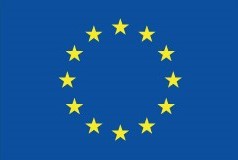- Home
- EU PiG – Different feeds as zinc oxide alternatives
EU PiG – Different feeds as zinc oxide alternatives
Kris Gios’ farrow-to-finish unit has trialled feeding herbs in piglet diets instead of including zinc oxide and has reduced production costs by 2.4%. The average daily gain and feed conversion rate have improved, and the weaner mortality rate has been reduced.
Ambassador: Kris Gios, Belgium
Publication date: June 2019
Theme: Health management
Challenges: Reducing zinc oxide
He is trialling three different types of feed as alternatives to the previous feed, which contained zinc oxide. They are:
- Feed containing herbs
- Feed with inert fibres added
- Normal feed
The farm has been antibiotic free since 2012 and has remained so since trying the new diets.
Using different feeds as zinc oxide alternatives
Benefits
- A better average daily gain (416 g), feed conversion rate (1.58) and reduced weaner mortality rate (2%) were observed when feeding herbs
- The mortality rate of weaners fed inert fibres declined in line with the herb diet
- The overall effect of these technical improvements resulted in a reduction in production costs of 2.4%
Costs
- The price of including herbs in feed was 2.3% higher than the standard diet
Feeding herbs in piglet diets instead of including zinc oxide
Kris asked his feed company to come up with an alternative diet excluding zinc oxide.
The suggestion was to include a combination of herbs, including oregano, at the following rates:
- Seven days prior to weaning to seven days post-weaning – 3 mg herbs/kg feed
- Seven days post-weaning to day 28 post-weaning – 1.5 mg herbs/kg feed
Kris also trialled the inclusion of inert fibres in standard feed in an attempt to calm the intestine.
Three groups of piglets were kept in the same barn. Each group was fed a different diet (either standard, herb-based or inert fibre) and weighed daily. Feed intake was monitored, and growth and feed conversion were calculated, along with the % saving (€/pig) across production.
To access more information, contact RPIG (Belgium): Laurens Vandelannoote
Case studies
Technical reports
Animal health best practice challenges
Use of slaughter data to improve health outcomes
African swine fever (ASF) biosecurity measures
Early warning of diseases and production errors
Influence of gut health on disease and production
Optimal vaccination strategies
Reducing antimicrobial medication
Contact us
To access more information, contact RPIG (Belgium): Laurens Vandelannoote or EUPig@ahdb.org.uk
This project has received funding from the European Union`s Horizon 2020 research and innovation programme under grant agreement No 727933.
 Government logo
Government logo

